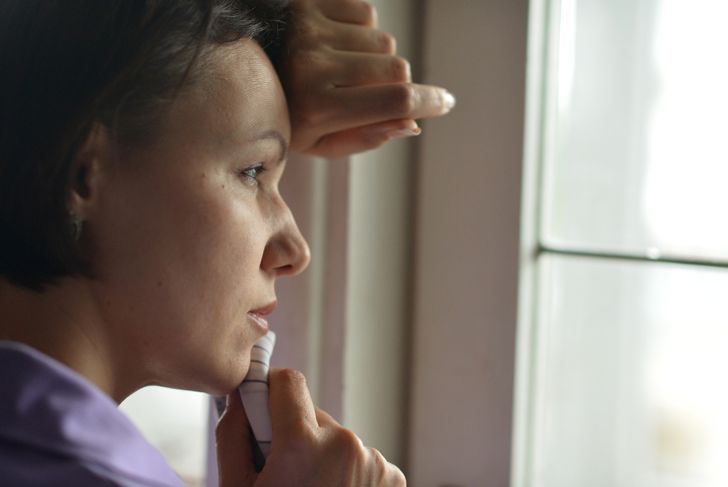According to the American Cancer Society, more than 1,000 women are diagnosed with cervical cancer each month [in]. More shocking is that 4,000 of them die every year. Cervical cancer does not seem to discriminate. Once a woman has become sexually active, she is at risk for this serious disease. Human papillomavirus (HPV) is the leading cause of malignant cervical cancer. It is a common STI (sexually transmitted infection) that often shows no symptoms, which facilitates the spread. That being said, with testing, cervical cancer is easily detectable, treatable, and even preventable.
A Lack of Symptoms
In its earliest and most treatable stages, cervical cancer can be present without showing any signs at all. This is one of the biggest reasons regular check-ups and Pap smears are so necessary for women. In most cases, HPV clears up on its own and will not cause persistent health problems. However, it can cause genital warts and cervical cancer in some instances. Factors such as multiple partners, smoking, and a compromised immune system increase one’s risk and make regular checks more critical. As cervical cancer progresses, symptoms are likely to show up.
Menstrual-Like Cramping
Most women experience cramping and pelvic pain during menstruation, and these symptoms are usually mild. These are normal and expected as long as they remain in each woman’s personal range of “normal.” However, if the pain comes on suddenly or at an unusual time, or if pain is originating in the cervix, this can indicate a cancerous tumor. Regardless of the cause, however, this kind of pain should prompt women to speak to their doctors.
Unusual Bleeding
Abnormal vaginal bleeding is a potential indicator of cervical cancer. The amount, flow, and duration of vaginal bleeding vary between women. Hormonal imbalances, PID (pelvic inflammatory diseases), infection, and some forms of birth control might explain abnormal bleeding. However, anything outside of ordinary should be investigated.
Painful Urination
Pain when urinating or a dull ache in the pelvis can indicate the presence of cervical cancer. Several infections can also cause this type of pain, including sexually transmitted diseases like gonorrhea and chlamydia, yeast infections, and urinary tract infections. While over-the-counter medications can help reduce the pain, it is best to see a doctor if the symptom lasts more than a day or two.
Alarming Discharge
Discharge that indicates cervical cancer is thick with mucus, typically has a strong, pungent, foul odor, and may contain blood. A greenish or yellow discharge may suggest an infection like chlamydia or gonorrhea. A thick, white and, curd-like discharge is associated with yeast infections. As such, abnormal discharge calls for medical attention, since lab tests are needed to confirm the diagnosis.
Irregular or Abnormal Cycles
Unexpected bleeding is fairly common in some scenarios, including after sexual intercourse, the days after a pap smear or tissue sample, times of intense stress, or when changing birth control or other hormones. A persistently irregular menstrual cycle is cause for concern, however. If the irregularities persist for three or more months and the woman is experiencing unexplained vaginal bleeding that is not part of the normal cycle, this is a red flag. Bleeding like this can indicate irritation of the cervix.
Discomfort, Pain, or Bleeding After Intercourse
Some pain and bleeding may occasionally occur after intercourse, even when the cervix is perfectly healthy. Misplaced IUDs, unlubricated condoms, and sizable partners can all cause some amount of occasional discomfort and minor damage leading to bleeding. However, experiencing regular occurrences of pain or bleeding after intercourse likely has an underlying cause, one of which could be cervical cancer.
Anemia
A sharp decrease in energy, fatigue, loss of appetite, weight loss, and pale skin can point to anemia, a lack of healthy red blood cells in the circulating blood. The lack of oxygen in the muscles and organs is responsible for the loss of energy, appetite, and palor. Cervical cancer is one cause of anemia. About one in three people with cancer develop anemia. Cancer causes inflammation and interferes with the normal production of red blood cells.
Urinary Incontinence
Mild urinary incontinence and other urinary changes may develop as people age. Any sudden or drastic change in urinary patterns, however, including increased frequency, pain, and an inability to maintain bladder control, may indicate cervical cancer. Some women experience a small amount of leakage when sneezing, jumping, or laughing. If incontinence occurs without a cause, has a sudden onset, or accompanies other symptoms of cervical cancer, it may be yet another sign, especially if there is blood in the urine.
Lower Back Pain
Pain in the lower back and shooting pain down the legs may accompany pelvic pain and develop due to cervical cancer. Back pain caused by cervical cancer will likely accompany other symptoms on the list, and it is generally constant due to the size and location of the tumor. Adult women who experience changes or discomfort relating to the reproductive system should seek a medical opinion. The earlier cervical cancer and other illnesses are detected, the more promptly treatment can begin, and the better one’s chances of recovery.

 Home
Home Health
Health Diet & Nutrition
Diet & Nutrition Living Well
Living Well More
More




















